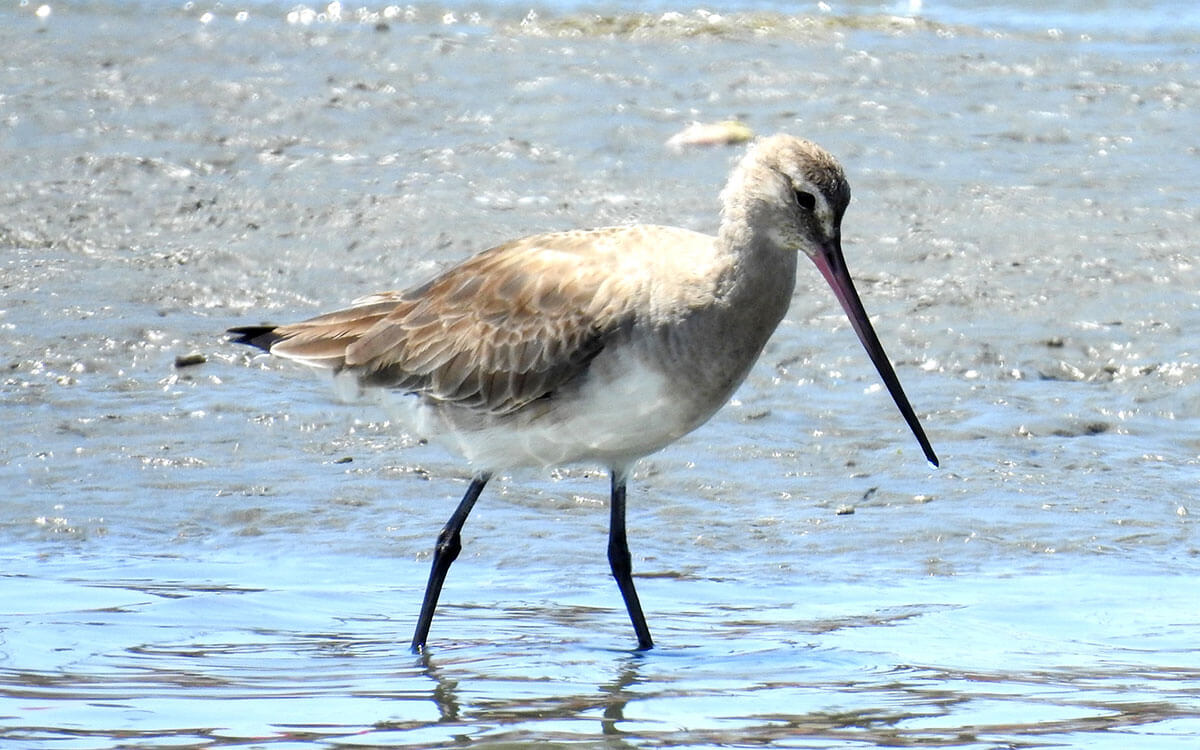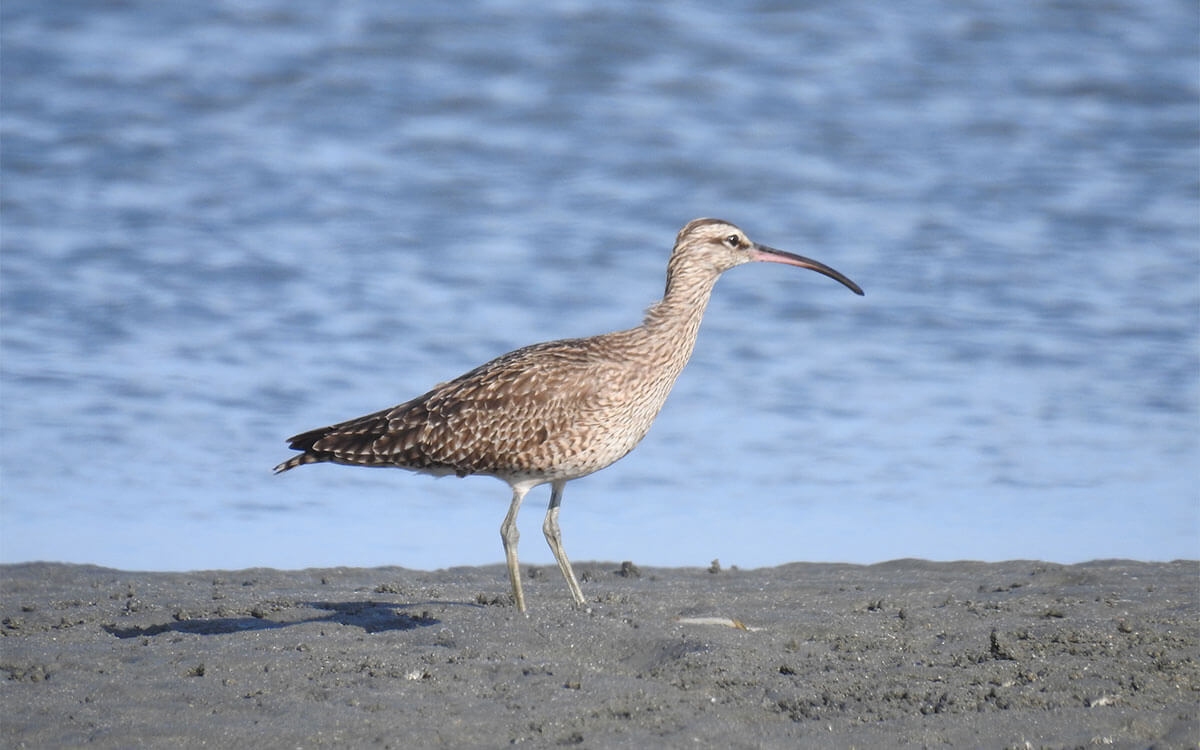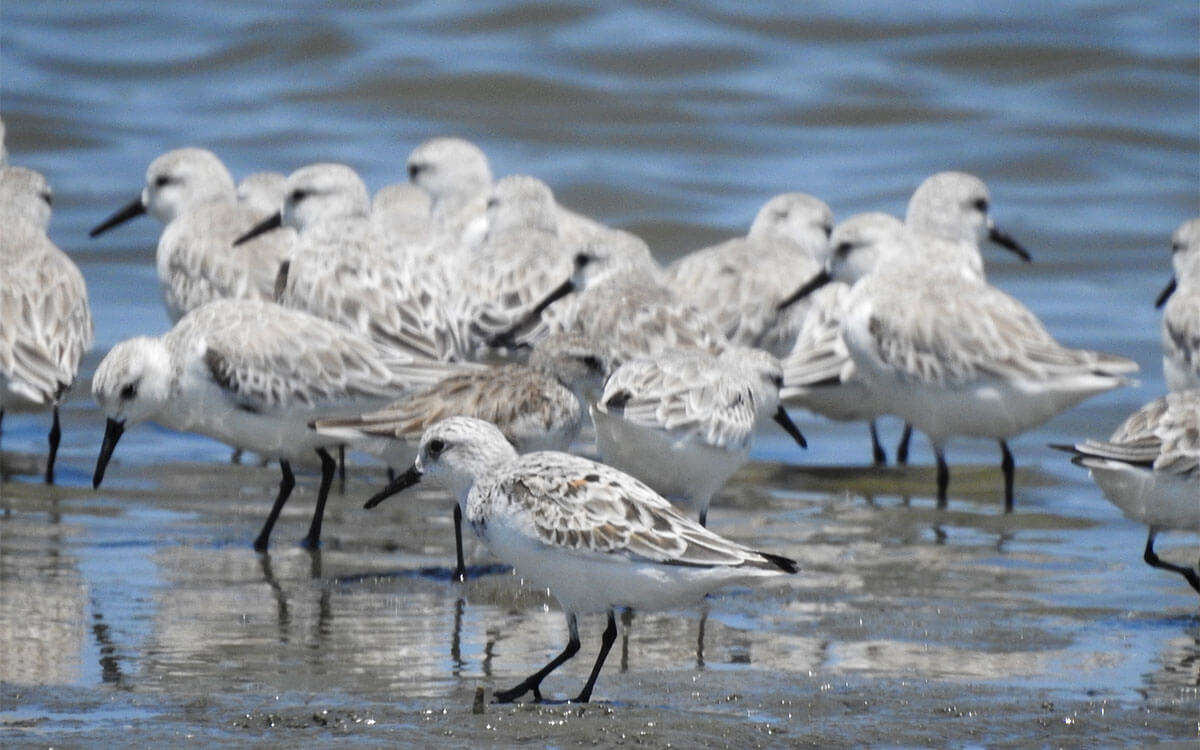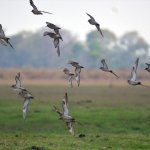By: Fernando Angulo (CORBIDI) and Arne Lesterhuis (WHSRN Executive Office, Manomet)
Located between Illescas Hill and the last mangrove swamp on the west coast of South America is the Estuario de Virrilá (Virrilá Estuary). The site is characterized by extensive sand and mud beaches, shallow waters, salt flats with halophilic vegetation, coastal desert, and the surrounding dry Algarrobo forest. Since December 2017, the area has been part of the Western Hemisphere Shorebird Reserve Network (WHSRN) as a Site of Regional Importance. The site regularly hosts more than 20,000 shorebirds and supports more than 1% of the biogeographic populations of Western Snowy Plover (Charadrius nivosus occidentalis), Pacific Coast population Whimbrel (Numenius phaeopus), and Sanderling (Calidris alba).
Although it was only nominated as a WHSRN site in 2017, its importance for shorebirds had been recognized for several decades. In the 1980s, Morrison and Ross, of the Canadian Wildlife Service, surveyed the entire coast of South America as part of their study to determine the most important sites for Nearctic migratory shorebirds. The results were published in 1989 in the Atlas of Nearctic Shorebirds on the Coast of South America (Morrison & Ross 1989[1]). They found more than 115,000 shorebirds on the coast of Peru, representing 53% of the total counted on the southern Pacific coast. Many of the shorebirds counted in Peru were in the Virrilá Estuary, where 31,325 birds were found, 27% of the total recorded in the country.


Hudsonian Godwit (Limosa haemastica) (left) and Whimbrel (right) some of the shorebirds at the Virrilá estuary. Photos: Fernando Angulo.
More recently, the site was highlighted as an important site in the Atlas of Peruvian Shorebirds (Senner & Angulo 2014). This publication presents the results of coastal surveys in 2010 using a protocol developed by the Program for Regional and International Shorebird Monitoring (PRISM). Based on these surveys, significant numbers of Sanderlings and Whimbrels were estimated. Due to the success of the coastal surveys in Peru, the census was repeated in January 2014 and 2019 in Peru, Chile, Argentina, Uruguay and southern Brazil, through a contribution from the Neotropical Migratory Bird Conservation Act (NMBCA). The Virrilá Estuary was again one of the sites surveyed and these data are currently being analyzed. Apart from being one of the sites surveyed for the coastal surveys, the area is also part of the Migratory Shorebird Project (MSP). MSP, led by Point Blue Conservation Science, is the largest coordinated survey of wintering shorebirds on the Pacific coast of the Americas.
Besides being an important area for shorebirds, it is also a site that represents optimal habitat for many other coastal species. Its wide beaches with shallow waters favor the stay of both aquatic and marine species, resident and migratory. Thousands of pelicans, gulls (resident and migratory), terns (Royal, Elegant and Black-footed Terns in the photo), cormorants, skimmers, flamingos, cormorants, among others, feed and rest in its waters and shores. Due to the large number of aquatic birds it supports, the Virrilá Estuary has been recognized as an Important Bird and Biodiversity Conservation Area from Birdlife International.
Due to its immense importance as a refuge for waterfowl and migratory birds, the Virrilá Estuary was recently officially recognized as Ramsar site number 2455 by the Convention on Wetlands of International Importance. The nomination of the site was a joint effort of its population and the Provincial Municipality of Sechura, with the technical support of the Ministry of the Environment (MINAM).

Sanderlings. Photo: Fernando Angulo
“In Peru, we are well aware of the importance of the Virrilá Estuary for resident and migratory shorebirds and waterfowl, as well as for the local economy through fishing. It is gratifying to see it receive a new ‘medal’ for its biological importance, since Virrilá is already an IBA, WHSRN site, and an Environmental Conservation Area. All these recognitions emphasize of the importance of Virrilá for biodiversity conservation” according to Fernando Angulo Pratalongo, Principal Investigator of the Center for Ornithology and Biodiversity (CORBIDI).
Since November 2015, the Virrilá Estuary was recognized as an Environmental Conservation Area (ACA inSpanish) of 34,678acres (14,034 hectares). The administration of the Virrilá ACA is in charge of the Provincial Municipality of Sechura, and co-manages it with its management committee. This recognition is an important step, as it begins the management of the area towards its effective conservation. Currently, the Virrilá Estuary has a Management Plan, a document that effectively orders which activities can be carried out in the area and which are incompatible with its conservation. Finally, Virrilá has also been selected as one of the 22 priority sites in Peru for shorebird conservation in the future “National Plan for the Conservation of Shorebirds in Peru – period 2021 – 2030.
It is clear that if there is one site on the northern coast of Peru where shorebirds feel at home, it is Virrilá Estuary!
[1] Morrison, R. I. G. & R. K. Ross. (1989). Atlas of Nearctic Shorebirds on the Coast of South America. Vols. 1 and 2, Can. Wildl. Serv. Spec. Publ., Ottawa.
Cover Photo: Virrilá Estuary, Peru. Photo: Fernando Angulo.






